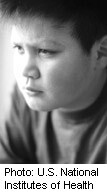
TUESDAY, June 12 (HealthDay News) — Teenagers with obstructive sleep apnea are at higher risk of behavioral and learning problems, according to a new study.
Obstructive sleep apnea is a sleep disorder in which breathing repeatedly stops during sleep because the airway is blocked. Common symptoms include snoring and a loud snort or gasp for breath after a pause in breathing, which can happen up to 30 times an hour.
Researchers from the University of Arizona, in Tucson, found that children with sleep apnea who continue to have the disorder in their teens have more problems with attention, hyperactivity and aggression; more trouble managing their emotions and social situations; and are less able to care for themselves without help.
“If left untreated, [obstructive sleep apnea] negatively impacts a youth’s ability to regulate their behaviors, emotions and social interactions,” study lead author Michelle Perfect, assistant professor of disability and psychoeducational studies, said in an American Academy of Sleep Medicine news release. “These behaviors can interfere with their ability to care for themselves and engage in socially appropriate behaviors — skills that are needed to be successful in school.”
The study included 263 children, who were followed up with after five years. Rates of social, behavioral and learning problems were double and triple, respectively, among young people with sleep apnea compared to kids without the disorder.
The researchers noted the higher rate of social and behavioral problems among teens with sleep apnea could not be explained by other factors, such as sex, race, ethnicity, body-mass index or age.
Although the study found an association between sleep apnea and behavioral and social problems in teens, researchers did not prove sleep apnea causes those problems.
The study was expected to be presented Tuesday at the Associated Professional Sleep Societies meeting in Boston. Because this study was presented at a medical meeting, the data and conclusions should be viewed as preliminary until published in a peer-reviewed journal.
More information
The U.S. National Heart, Lung, and Blood Institute provides more information on sleep apnea.

